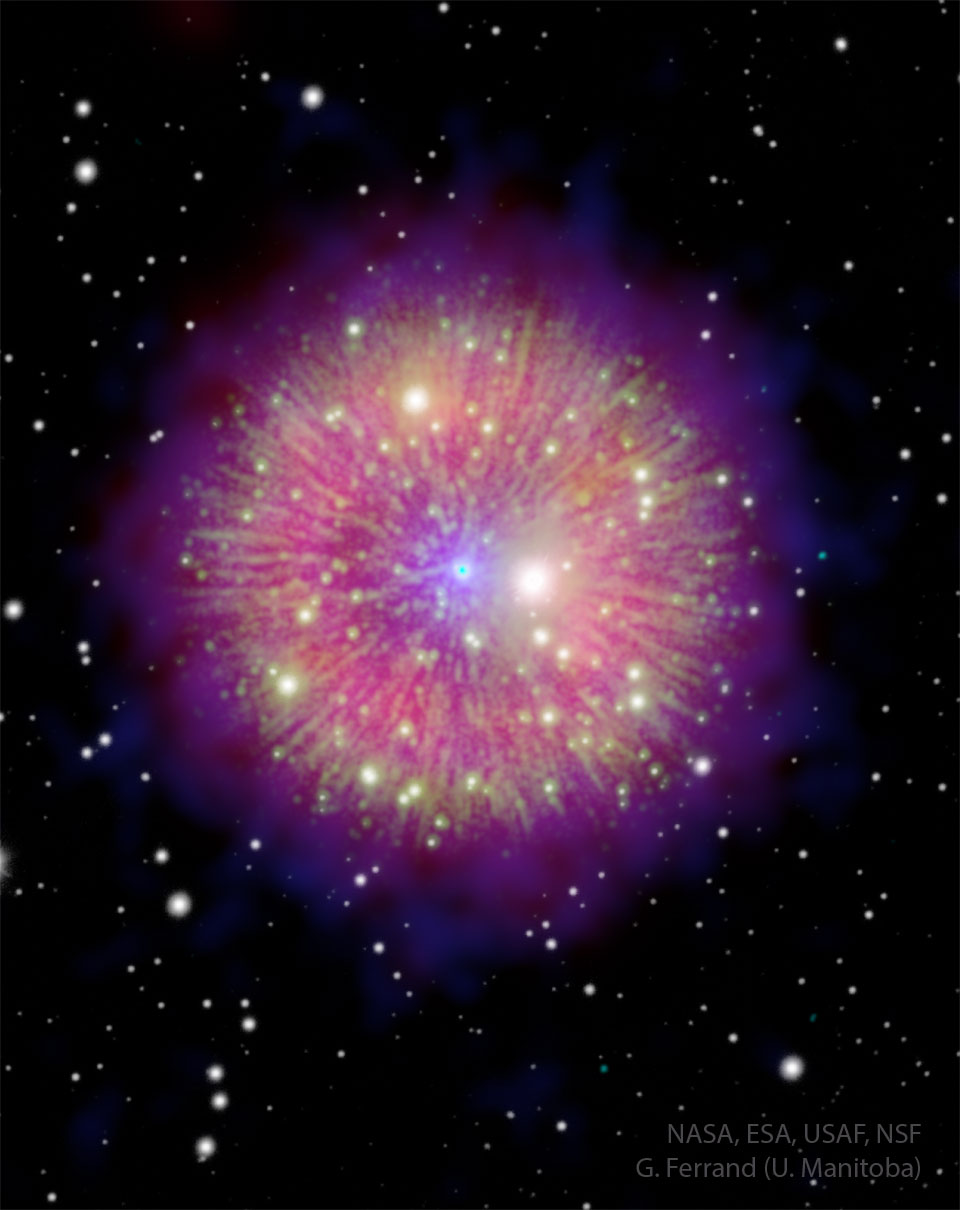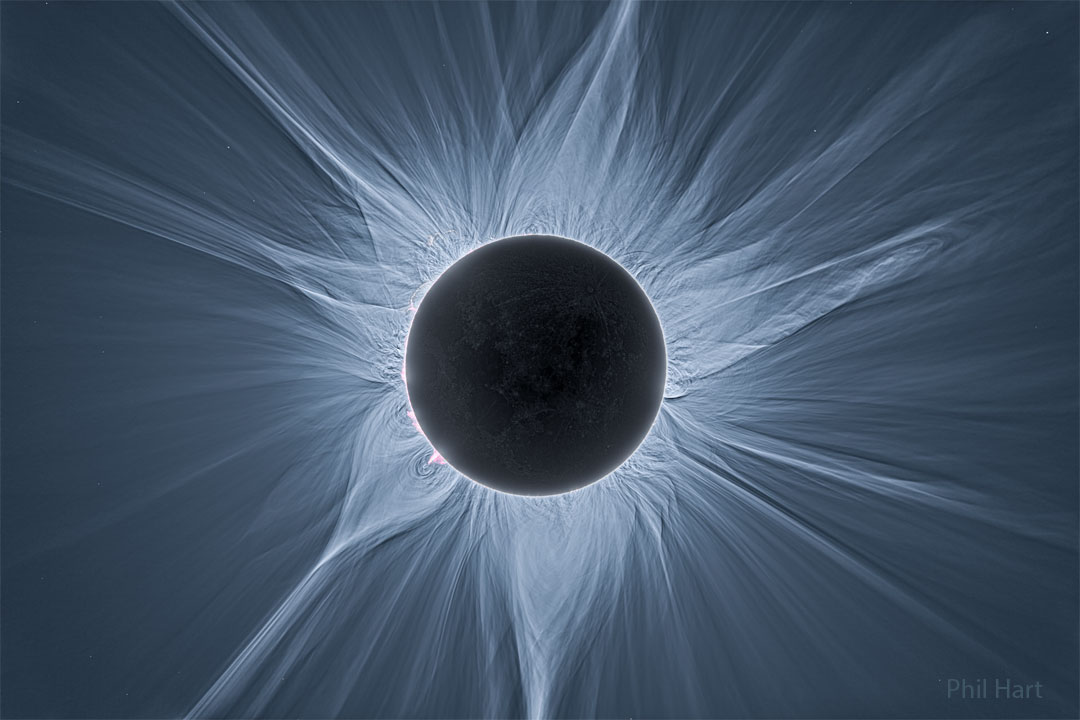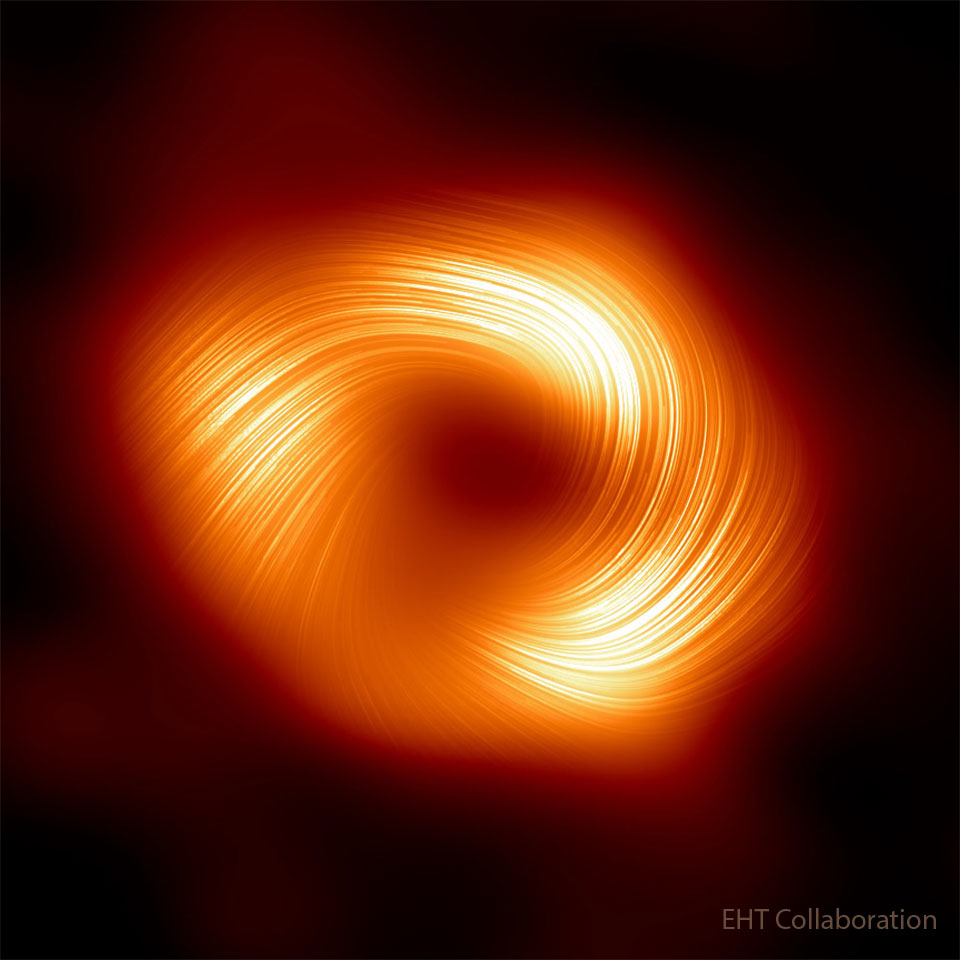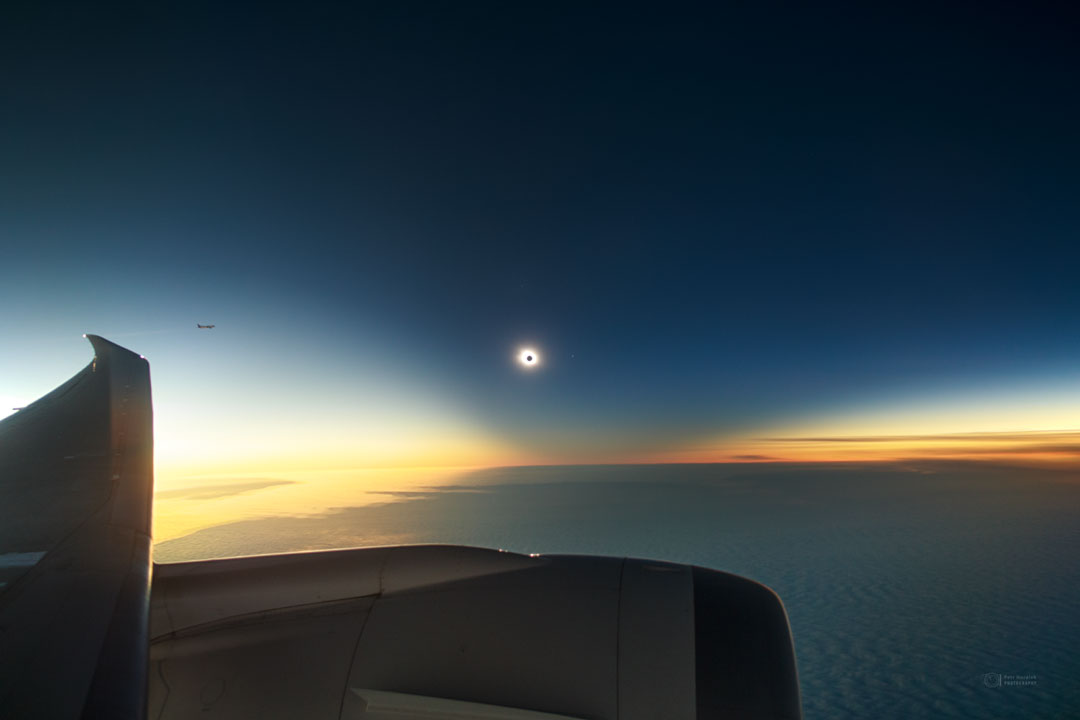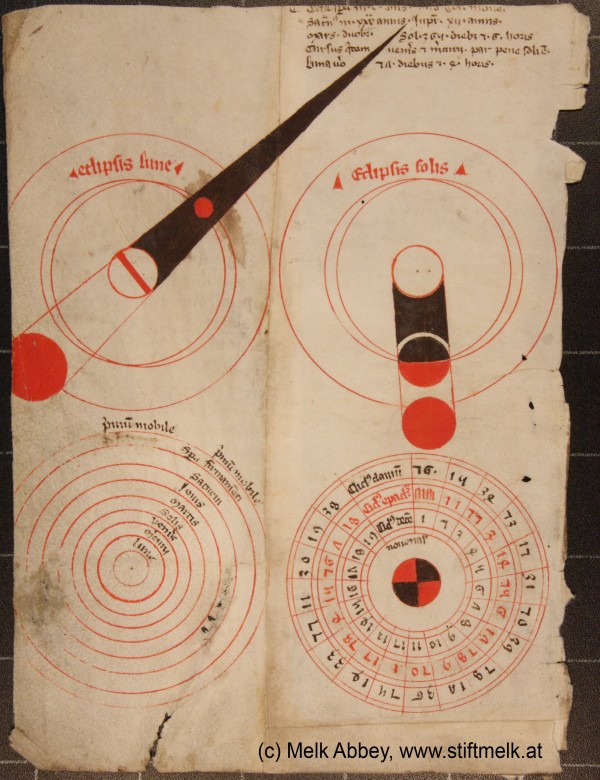
Nombre total de pages vues
03/04/2024
SANTé/MEDECINE - Le fonctionnement de l'oeil humain - Les différents muscles (vus de face)

ASTRONOMY - Unusual Nebula Pa 30
2024 April 3
Image Credit: NASA, ESA, USAF, NSF;
Processing: G. Ferrand (U. Manitoba), J. English (U. Manitoba), R. A. Fesen (Dartmouth), C. Treyturik (U. Manitoba);
Text: G. Ferrand & J. English
Explanation: What created this unusual celestial firework? The nebula, dubbed Pa 30, appears in the same sky direction now as a bright "guest star" did in the year 1181. Although Pa 30's filaments look similar to that created by a nova (for example GK Per), and a planetary nebula (for example NGC 6751), some astronomers now propose that it was created by a rare type of supernova: a thermonuclear Type Iax, and so is (also) named SN 1181. In this model, the supernova was not the result of the detonation of a single star, but rather a blast that occurred when two white dwarf stars spiraled together and merged. The blue dot in the center is hypothesized to be a zombie star, the remnant white dwarf that somehow survived this supernova-level explosion. The featured image combines images and data obtained with infrared (WISE), visible (MDM, Pan-STARRS), and X-ray (Chandra, XMM) telescopes. Future observations and analyses may tell us more.
02/04/2024
SANTé/MEDECINE - HISTOIRE - 1847 : l'hygiène en médecine avec Semmelweis

ASTRONOMY - Detailed View of a Solar Eclipse Corona
2024 April 2
Image Credit & Copyright: Phil Hart
Explanation: Only in the fleeting darkness of a total solar eclipse is the light of the solar corona easily visible. Normally overwhelmed by the bright solar disk, the expansive corona, the sun's outer atmosphere, is an alluring sight. But the subtle details and extreme ranges in the corona's brightness, although discernible to the eye, are notoriously difficult to photograph. Pictured here, however, using multiple images and digital processing, is a detailed image of the Sun's corona taken during the April 20, 2023 total solar eclipse from Exmouth, Australia. Clearly visible are intricate layers and glowing caustics of an ever changing mixture of hot gas and magnetic fields. Bright looping prominences appear pink just around the Sun's limb. A similar solar corona might be visible through clear skies in a narrow swath across the North America during the total solar eclipse that occurs just six days from today
01/04/2024
ASTRONOMY - Swirling Magnetic Field around Our Galaxy's Central Black Hole
2024 April 1
Image Credit: EHT Collaboration
Explanation: What's happening to the big black hole in the center of our galaxy? It is sucking in matter from a swirling disk -- a disk that is magnetized, it has now been confirmed. Specifically, the black hole's accretion disk has recently been seen to emit polarized light, radiation frequently associated with a magnetized source. Pictured here is a close-up of Sgr A*, our Galaxy's central black hole, taken by radio telescopes around the world participating in the Event Horizon Telescope (EHT) Collaboration. Superposed are illustrative curved lines indicating polarized light likely emitted from swirling magnetized gas that will soon fall into the 4+ million mass central black hole. The central part of this image is likely dark because little light-emitting gas is visible between us and the dark event horizon of the black hole. Continued EHT monitoring of this and M87's central black hole may yield new clues about the gravity of black holes and how infalling matter creates disks and jets.
31/03/2024
ASTRONOMY - Total Solar Eclipse Below the Bottom of the World
2024 March 31
Image Credit & Copyright: Petr Horálek (ESO Photo Ambassador, Inst. of Physics in Opava) ; Acknowledgement: Xavier Jubier
Explanation: In late 2021 there was a total solar eclipse visible only at the end of the Earth. To capture the unusual phenomenon, airplanes took flight below the clouded seascape of Southern Ocean. The featured image shows one relatively spectacular capture where the bright spot is the outer corona of the Sun and the eclipsing Moon is seen as the dark spot in the center. A wing and engine of the airplane are visible across the left and bottom of the image, while another airplane observing the eclipse is visible on the far left. The dark area of the sky surrounding the eclipsed Sun is called a shadow cone. It is dark because you are looking down a long corridor of air shadowed by the Moon. A careful inspection of the eclipsed Sun will reveal the planet Mercury just to the right. You won't have to travel to the end of the Earth to see the next total solar eclipse. The total eclipse path will cross North America on 2024 April 8, just over one week from today.
30/03/2024
ASTRONOMY - Medieval Astronomy from Melk Abbey
024 March 30
Image Credit: Paul Beck (Univ. Vienna), Georg Zotti (Vienna Inst. Arch. Science)
Copyright: Library of Melk Abbey, Frag. 229
Explanation: Discovered by accident, this manuscript page provides graphical insight to astronomy in medieval times, before the Renaissance and the influence of Nicolaus Copernicus, Tycho de Brahe, Johannes Kepler, and Galileo. The intriguing page is from lecture notes on astronomy compiled by the monk Magister Wolfgang de Styria before the year 1490. The top panels clearly illustrate the necessary geometry for a lunar (left) and solar eclipse in the Earth-centered Ptolemaic system. At lower left is a diagram of the Ptolemaic view of the Solar System with text at the upper right to explain the movement of the planets according to Ptolemy's geocentric model. At the lower right is a chart to calculate the date of Easter Sunday in the Julian calendar. The illustrated manuscript page was found at historic Melk Abbey in Austria.
29/03/2024
SANTé/MEDECINE - Le fonctionnement de l'oeil humain - Schéma de l'œil

SANTé/MEDECINE - HISTOIRE - 1828 : la pharmacopée d'Antoine Jourdan

SANTé/MEDECINE - L'électroencéphalographie (EEG) - le cerveau électrique

ASTRONOMY - Juno Flyby of Ganymede and Jupiter
2025 December 14 Juno Flyby of Ganymede and Jupiter Video Credit: NASA , JPL-Caltech , SWRI , MSSS ; Animation: Koji Kuramura , Geral...

-
2022 September 26 All the Water on Planet Earth Illustration Credit: Jack Cook, Adam Nieman, Woods Hole Oceanographic Institution ; Data ...
-
2025 May 11 The Surface of Venus from Venera 14 Image Credit: Soviet Planetary Exploration Program , Venera 14 ; Processing & Copyri...
